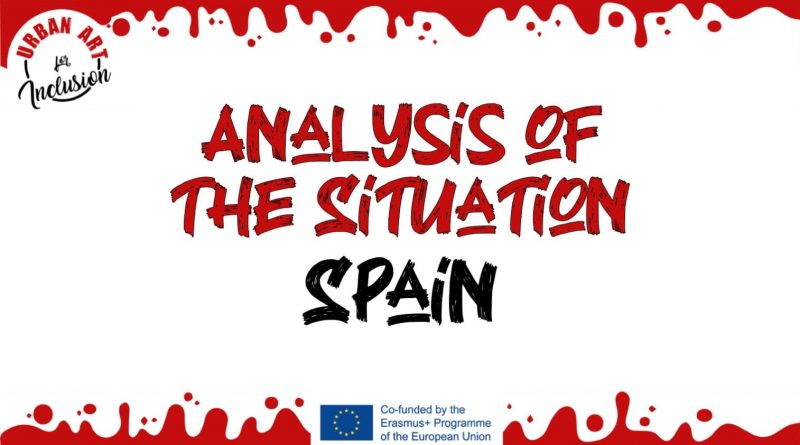Analysis of the situation: Spain
In the frame of Local Activities I, each project organisation had to analyse the situation of young migrants and urban art in its country. Here you have a summary of the text written by Iniciativa Internacional Joven concerning the situation of Spain.
MIGRATION:
From the 1980s Spain shifted from being a country of emigration to a country of immigration, It is also a country of passage for immigrants traveling from the South (Africa) to the North and historically many people are also moving from the countryside to the major cities and most industrialized Autonomous Communities.
At January 1, 2021, foreign nationals represent the 11.34% of the total population of Spain, being Morocco, Romania, United Kingdom, Colombia and Italy the top five countries of origin. Most of the population of foreign origin is concentrated in four autonomous communities: Catalonia, Madrid, Andalusia and the Valencian Community. The net migration rate of the country is positive. If we consider the situation of the city of Malaga, foreigners are 8.8% of the total population, being the Moroccan, Ukrainian, Chinese, Paraguayan and Italian, the five most represented nationalities. In Andalusia, the autonomous community where Malaga is located, there is a predominance of migratory processes for economic reasons with half of the population coming from the European Union. Another phenomenon is the presence of high number of people coming from the North of Europe, with high incomes, who have second home on the coastline of the Province of Malaga.
Even if Spain has become a receiver country, many people continue to emigrate. The most common causes are: lack of employment and opportunities, improvement of the professional and/or economic situation, cooperation, research and investigation, training and learning opportunities, personal and familiar reasons. Among the more than 2,5 million people that have emigrated in the last decade, the 91% had a university degree.
URBAN ART:
Concerning hip hop, it arrived to Spain due to the presence of US military bases in the territory. The one of Torrejón de Ardoz, close to Madrid, is usually pointed out as the entry point of rap in Spain. The soldiers, especially those of African-American origin, were listening rap and started to share it with famous nightclubs of the capital. The first attempt to consolidate a hip hop scene was in 1989 with a compilation of different rap groups called “Rap in Madrid”. After seeing how Americans moved with that music, Spanish wanted to imitate them and around 1983 breaking explosion began, being the AZCA financial district of Madrid one of the meeting points. During the Nineties, the attention of the media disappeared but the movement continue to prosper and many young people, now members of important national groups, were recording and distributing their first demos in a very homemade way and the foundations for the appearance of a real hip hop scene in Spain began to be established.
Graffiti appeared also in the first half of the Eighties Madrid and one of the first references is Muelle, with his typical “arrow” style. At the beginning of the nineties the proliferation of tags and the demand for spaces makes the laws tougher for graffiti writers. Other relevant cities for graffiti in Spain were Barcelona and Alicante. Although there are many hip hop events and competitions, some of them well-known all over the world with the participation of international artists, the topic of migrant inclusion is not taken into great consideration.

